Slime is messy: 35 years of ‘Ghostbusters’
Do you believe in UFOs, astral projections, mental telepathy, ESP, clairvoyance, spirit photography, telekinetic movement, full trance mediums, the Loch Ness monster and the theory of Atlantis?
Okay, how about fanbase entitlement, old guard sexism, age-old racism, allegations of nepotism, disillusioned stars and semi-delusional co-creators all within a single, ever splintering franchise?
If the answer is yes, don’t wait another minute, pick up the phone and call the professionals.
Ghostbusters.
Three years removed from a deeply polarizing reboot, the folks at Sony are taking another risk with the franchise with next summer’s long-awaited third installment of the original “Ghostbusters” franchise.
Just in time for another election cycle.
“We got one!”
Thirty-five years ago today, “Ghostbusters” was released. The film, starring Dan Aykroyd, Ernie Hudson, Rick Moranis, Bill Murray, Annie Potts, Harold Ramis and Sigourney Weaver was a smash hit, bringing in over $242 million worldwide and sparking a phenomenon that generated a 1989 sequel, a hugely successful cartoon series (“The Real Ghostbusters,” 1986-1992), several comic book adaptations, video games, a 1997 spin-off cartoon (“Extreme Ghostbusters”), a rabid fanbase with an impressive early online presence, and years and years of speculation over a third installment.
By the late 90s, “Ghostbusters III” rumors were reaching fever pitch, as co-creator and chief franchise cheerleader Dan Aykroyd was going around Hollywood talking to anyone who would listen about his newest script, “Ghostbusters: Hellbent.”
“The concept is that there’s a positive image of life and there’s a negative image of life. Hell is not some distant place, far away from this dimension or realm. Hell is right next door…Given the right technology you could flip the switch and all of a sudden the positive that we see in this room suddenly becomes negative. It’s kind of neat.”
Kind of.
This “Ghostbusters in Hell” concept suffered from the same ailments that plagued Aykroyd’s first script for the ’84 original, prior to Ramis’s fine-tuning of it: a lot of conceptually advanced sci-fi jargon with a light sprinkling of interchangeable character interactions.
But that didn’t seem to damper Aykroyd’s enthusiasm for the idea.
“We go to the hell side of Manhattan…Manhellton! It’s all where the cops are–they are all blue minotaurs. Central Park is this huge peat mine with green demons there, surrounded by black onyx thousand-foot high apartment buildings with classic red devils, very wealthy. We go and visit a Donald Trump-like character who is Mr. Sifler…Luke Sifler….Lu-cifer! So we meet the devil inside.”
And if that weren’t enough, the film would have introduced a new core Ghostbusting team, with characters like Franky (“body-pierced, tough New Jersey punker”), Lovell (“a dread-locked dude”), Moira (“a pretty but uptight gymnast and science grad”), and Carla (“a Latino beauty”).
There was also the curious addition of a young boy named Nat, who was described as “a prepubescent genius whose powerful brain has made his head abnormally large.”
As for who would make up the cast for the new ensemble, Aykroyd and Ramis seemed to be aiming at a “90s blockbuster” dartboard. At one point or another, Chris Farley, Chris Rock, Will Smith, Ben Stiller were all mentioned as possible candidates.
Alas, the folks at Sony didn’t seem to share Aykroyd’s vision.
In a wonderfully dated interview with Access Hollywood in 1999, Aykroyd laments, “it doesn’t look like it’s going to happen for the same reason they aren’t going to make ‘Men In Black II’…You’re talking about billion dollar releases. Spend 120 (million), make 500 (million). They don’t see it that way.”
Given the luxury of hindsight (and a viewing of “Blues Brothers: 2000”), and considering quality of special effects in 1999, the world may have been lucky to avoid such an effects heavy Ghostbusters installment. Especially if you remember how Sigourney Weaver’s other 80s franchise coughed and wheezed its way into the 21st century with “Alien: Resurrection.”
So the idea sat in its own version of Development Manhellton until 2008, when Sony sought the help of The Office producers and writers Lee Eisenberg and Gene Stupnitsky, who had also recently worked on Year One, a (terrible) film directed by Harold Ramis. Though the duo’s script went through several re-writes, none were strong enough to pique the interests of Bill Murray, who had dragged his heels on the 1989 sequel and seemed even less interested in donning a grey jumpsuit for a third time, given he was in the midst of his own fruitful second act as an actor.
By the end of the first decade of the 21st century, Ghostbusters was in flux. Dan Aykroyd gave some interviews suggesting the third installment may actually be a CGI animated feature. Then it was announced that Terminal Reality had managed to wrangle the original cast members for a reunion in the form of Ghostbusters: The Video Game (2009). Aykroyd and Ramis repeatedly told the press that this game more or less served as a third movie. The story took place in 1991, incorporated various themes found in Aykroyd’s beloved “Hellbent” script, and was penned (at least partially) by the original film’s writing duo.
From there, other than the occasional Aykroyd flame-fanning, all was quiet on the proverbial PKE meter.
When Harold Ramis passed away in 2014, at the age of 69, it seemed as though the doors of the old Tribeca firehouse may just have been shuttered for good.
Death Is But a Door, Time Is But a Window…
In August of 2014, it was announced that Paul Feig would be directing a rebooted Ghostbusters film. Feig, a film-making veteran with a very solid career batting average, accepted the project believing that by avoiding the cannon of the original two films, he would have more freedom in creating a new “Ghostbusters” universe featuring some of the most trusted comedic talents of the decade in Kristin Wiig and Melissa McCarthy, as well as SNL upstart Kate McKinnon and veteran comic Leslie Jones.
Aykroyd raved about the new direction of his beloved franchise, “I’m delighted by this inheritance of the ‘Ghostbusters’ torch by these most magnificent women in comedy.”
For a moment, there was peace. However, by the time filming began in 2015, there were murmurs of disappointment at the fringes of the predominantly male online “Ghostbusters” community.
The film’s first trailer appeared online on March 3, 2016. In the weeks and months that followed, cast and crew of the film were bombarded with hateful messages on social media. Coordinated attacks were orchestrated on the movie’s iMDB page to “downvote” the film before its release. Its trailer became the 9th most “disliked” video in YouTube history. The “Ghostbusters” subreddit was filled with hateful and misogynistic commentary, posted by self-declared fans who felt it necessary to defend themselves against phantom attacks by Feig, co-writer Katie Dippold, and anyone else who dared to try and expand upon the basic formula of four adult males zapping ghosts in matching jumpsuits and backpacks.
Leslie Jones, the film’s lone African American star, was predictably subject to the most vile online attacks. “Ok I have been called Apes,” the star wrote on Twitter, “even got a pic with semen on my face. I’m tryin to figure out what human means. I’m out.” In another tweet, a defeated Jones admitted “I’m more human and real than you fucking think.”
Paul Feig is also human. And like any decent human he came to the defense of his friend, tweeting “Fuck the haters. And haters, attack me all you want but when you attack and insult my cast, you’ve crossed the line. Grow up and leave my cast alone.”
While longtime Ghostbusters community leaders like GhostbustersNews.com and ProtonCharging.com voiced their excitement for the reboot, the feedback loop of negative energy was already nearing deafening levels before 2016 presidential candidate, and inspiration for the physical manifestation of Satan in one of Aykroyd’s earlier “Ghostbusters III” scripts, Donald Trump weighed in.
“Now they’re making Ghostbusters with only women. What’s going on?”
Trump (who, fun fact, once had a cameo role in the music video for Bobby Brown’s “Ghostbusters II” anthem “On Our Own”) was in the midst of his historic presidential race against Hillary Clinton, and it was fairly obvious what dots he was trying to connect.
Men = strong. Women = weak. Trump = strong. Hillary = weak.
The comment, and its corresponding 10-second video (posted to Trump’s Twitter account), galvanized his supporters, as well as the film’s detractors.
The film, by the way, was still months away from being released and had yet to be viewed by the general public. But at that point, it hardly mattered. “The Girl Ghostbusters” were becoming an incredibly polarizing social issue.
The backlash was not lost on Bill Murray, who had long debated whether or not he should appear in the new film. “I was seriously thinking about this for years, really…It kept eating at me, and I really respect those girls. And then I started to feel like if I didn’t do this movie, maybe somebody would write a bad review or something, thinking there was some sort of disapproval.”
Murray wasn’t the only original Ghostbuster to show his support. Ernie Hudson, who initially called the reboot a “bad idea,” alliteratively declared “Four fiercely funny, foxy, females busting ghosts…phenomenal” via Twitter.
Aykroyd, forever the cheerleader, once again championed the new chapter, tweeting, “Saw test screening of new movie. Apart from brilliant, genuine performances from the cast both female and male, it has more laughs and more scares than the first 2 films plus Bill Murray is in it! As one of millions of man-fans and Ray Stantz, I’m paying to see that and bringing all my friends!”
In spite of all this, revised box-office projections for Feig’s “Ghostbusters” were starting to make the folks at Sony squirm. Feeling the heat, they dedicated an estimated $200 million in marketing the film. They began targeting male audiences by paying for high-profile NBA players like Kobe Bryant to strap on a proton pack for commercials during the 2016 NBA Finals. Papa John’s, already the official pizza of the NFL, now became the official pizza of Ghostbusters, with Slimer appearing on boxes and in their ad spots. A full-sized upper torso of the Stay-Puft Marshmallow Man was constructed in a London subway station prior to the film’s UK release.
To top it all off, Ghostbusters new and old would appear together on Jimmy Kimmel Live! for “Ghostbusters Night,” featuring Ray Parker Jr. leading the late-night band in what must have been his millionth performance of the theme song.
When Kimmel pressed the original actors for their opinions on the reboot, fans and followers of the franchise fully expected Aykroyd’s glowing review. The significantly more intriguing opinion was that of Murray. After all, he was the most popular member of the original team and had once stated he would only appear in a third film if he was killed off in the first act.
If Sony and the new Ghostbusters crew were hoping for an out-of-the park homer, they had to endure a few inside pitches from Murray, as he said the film “sort of rumbles along in the beginning. You’re going, ‘Oh God, are they going to pull this thing off? There’s a lot on the plate – there’s a lot of expectation.’”
Uhhhh…
“But Danny and I, and Annie and Ernie, were just screaming, cheering like we were at a sporting event at the end of it.”
So there you have it. Peter Venkman was cheering for the new Ghostbusters like they were his beloved Chicago Cubs. That should solve it, right? An endorsement from the man himself.
Not quite.
Like everything else associated with the 2016 “Ghostbusters,” the fringes of the franchise’s fanbase were quickly on the defensive. Conspiracy theories materialized that Murray only appeared in the film in order to avoid a lawsuit from Sony (this particular theory was founded on a very deliberate misinterpretation of an industry email posted on Wikileaks earlier in 2016). Videos of the Kimmel interview were edited to focus solely on Murray’s reactions and posted on YouTube with titles like “Ghostbusters (2016) Bill Murray Dies Inside” and “Why Bill Murray Is REALLY In Ghostbusters (2016).”
“Ghostbusters: Answer The Call” was going to fail. The question now was only how spectacularly.
While there was still a chance at pleasing the fanbase overall, there would be no pleasing Sony, despite their initial hope that “Ghostbusters” would become a billion dollar franchise, (with a production budget of $140 million, and over $300 million invested in the project) breaking even was a far more attainable goal.
The film took in $46 million on its opening weekend, which was significantly lower than what Sony had initially hoped for, but a decent showing considering the damage endured during the preceding months.
Eventually when all the tickets had been counted, “Ghostbusters” took in $229.1 million, almost $100 million shy of breaking even.
So much for “spend 150, make 500.”
Speculation of a sequel, which at one point seemed inevitable, now seemed irrelevant. Box office performance aside, after the backlash the film received prior to its release, it became increasingly hard to imagine Feig, Wiig, McCarthy, McKinnon, and Jones grinding through another Ghostbusters pressure cooker cycle.
The fact that Feig’s “Ghostbusters” was a success from a story-telling perspective hardly mattered either. Kate McKinnon’s magnetically charming portrayal of eccentric nuclear physicist Jillian Holtzmann would build the character a rabid fanbase, including a large portion of the online LGBTQ+ community who found a fitting on-screen hero in Holtzmann (when asked by The Daily Beast whether or not the Holtzmann was indeed gay, Feig gave a “grinning, silent nod”; but quickly followed up with, “I hate to be coy about it. But when you’re dealing with the studios and that kind of thing…“)
Wiig’s understated, if not slightly unfamiliar deadpan performance only complimented McCarthy and Jones’ efforts in what was ultimately fine and cohesive group dynamic.
Granted, the movie wasn’t perfect. Considering the hefty price-tag, the special effects had a certain “Scooby Doo movie” vibe to them that left something to be desired. The reliance on mostly practical effects in 1984 actually managed to add a sense of realism. There are parts in the original “Ghostbusters” where it looks like they actually managed to capture a ghost on film. In 2016, there CGI ghosts, and plenty of ‘em.
The pacing was scattered, and by constantly nodding to the 1984 original, these new Ghostbusters failed to truly establish their own identity. At times it felt as though Feig and co. were attempting to win over the “die-hard” fans by bribing them with easter eggs.
A few other quick gripes: The bad guy, Rowan North, was as cartoonish a villain as any found in “The Real Ghostbusters.” And the “rock show” scene is the most unrealistic portrayal of a concert ever committed to film. First off, a sold out heavy metal show (in 2016?), taking place in an art deco theater in Midtown, in the daytime. Not to mention the dozens of Marshall stacks lining the stage, but not a cable in sight.
If the bridge between generations had been hindered by Feig’s loyalty to the original films, it also wasn’t helped by his crowbarring members of the original cast into largely unremarkable cameos.
It all became very confusing, very fast. In the 2016 “Ghostbusters” universe: Slimer continues to exist in the after-life, Stay Puft marshmallows are popular enough to get a Macy’s Thanksgiving Day Parade float but not popular enough to be considered a worthy vehicle for the apocalypse, Zuul is thinking about coming out of retirement, the famous no-ghost logo is named Rowan (?) and physically manifests itself to fight the Ghostbusters (take that capitalism!), and somewhere in New York there’s a cab driver who looks suspiciously like Dr. Ray Stantz dismissing the danger of paranormal entities as “Class-Five floating vapors, nothin’ to worry about.”
Having said all of that — and it is a lot — the movie was good. It was as good of a “Ghostbusters” movie as the 1989 sequel had been. But the public had spoken and deemed that it was not good enough, thus setting off a biathlon of finger-pointing and backpedalling.
“I think it kind of hampered us a little bit because the movie became so much of a cause…It was a great regret in my life that the movie didn’t do better, because I really loved it. It’s not a perfect movie. None of my movies are perfect. I liked what we were doing with it. It was only supposed to be there to entertain people.”
These are the words of a resigned Paul Feig, looking back on what could have been. Instead of inheriting a storied franchise and leading it into the ever promising future, the only thing Feig ended up with was the bulk of the blame.
The first to pile on, rather surprisingly, was one of the film’s most ardent supporters: Dan Aykroyd: “I was really happy with the movie, but it cost too much. And Sony does not like to lose money…The director, he spent too much on it. He didn’t shoot scenes we suggested to him and several scenes that were going to be needed and he said ‘nah, we don’t need them’. Then we tested the movie and they needed them and he had to go back. About $30 to $40 million in reshoots. So he will not be back on the Sony lot any time soon.”
Sure, Feig made some questionable choices, like reportedly spending over a million dollars on a choreographed group dance sequence that would eventually be cut from the film. But he was a scapegoat. The movie also suffered from the studio’s failing to secure distribution in China, and its own misbegotten strategy of trying to impress skeptics with nostalgia over substance.
We’re still decades away from being able to place Feig’s Ghostbusters in the context of its time. But when we do eventually look back on this film, released four months before Donald Trump was elected President of the United States, it’s easy to imagine the parallels will draw themselves.
There’s Definitely a Very Slim Chance We’ll Survive
After “Ghostbusters: Answer The Call” failed to set the world on fire, the executives at Sony found themselves with a decision to make. Were they going to cut their losses and let the Ghostbusters franchise sit in its Culver City containment unit?
In a way, they answered that question for themselves even prior to the release of the newest film, as the company created Ghost Corps in 2015 in order to “expand the Ghostbusters brand into films, television series and merchandise,” and assigned Ivan Reitman to lead the company.
Sony was riding with “Ghostbusters,” win, lose, or draw.
The studio’s immediate, knee-jerk, cringey reaction was, “Fine! You want guys?! We’ll give you guys!” Channing Tatum, Reid Carolin, Peter Kiernan, and Drew Pearce were all rumored to be working on a “male oriented” Ghostbusters movie (suggested working title Yeesh That’s A Bad Idea), before it was almost immediately canned in favor of a safer, animated series (tentatively titled Ecto Force) based on a futuristic Ghostbusters team from the year 2050, and slated to be released in 2018.
However in 2017, Reitman quietly announced the series had been postponed. And that was the last we heard until January 15, 2018, when it was revealed that Jason Reitman (son of Ivan and successful filmmaker in his own right) would be directing a new Ghostbusters film, and that this new film would live in the same cinematic universe as “Ghostbusters” and “Ghostbusters II,” essentially a direct continuation of the story we left off in 1989.
“This is the next chapter in the original franchise,” Jason Reitman declared, “It is not a reboot. What happened in the ‘80s happened in the ‘80s, and this is set in the present day.”
In other words, “well that was weird, huh? Let’s get back to the REAL Ghostbusters.”
Leslie Jones was the first member of the 2016 cast to comment on the latest news, tweeting “So insulting. Like fuck us. We didn’t count. It’s like something trump would do…”
It’s hard not to see her argument. Sony took a gamble with Paul Feig and his all-female cast. It may not have been a gamble they anticipated, but perhaps it was naive to think people wouldn’t search for political subtext (real or imagined) in a climate as polarized as the summer of 2016. And when the movie “failed,” Sony swept it under the rug as quickly as they could: nixing any hope of a sequel, and green-lighting a family-run continuation of the original duo of films. In doing so Sony seemingly apologized to each and every sweaty, angry, entitled soul who claimed to have lost a bit of their childhood while viewing a 116-minute comedic film that featured ladies instead of fellas.
Jason Reitman did his best to snuff out any controversy before it could start. “I have so much respect for what Paul [Feig] created with those brilliant actresses, and would love to see more stories from them. However, this new movie will follow the trajectory of the original film.”
Feig responded, sort of, while tweeting in support of Jones, “Leslie spoke her truth and I support her. I am very open to Jason’s new version of GB but am also sad that our 2016 team may not get to bust again…We’re forever proud of our movie.”
Piecing together the few rumors that have materialized so far, it sounds like Ghostbusters III will focus on a single mom and her family, who have mysterious ties back to the original 1984 movie. While discovering old secrets about their small town, they will inevitably team up with at least one former Ghostbuster in what feels like a spin-off of Stranger Things (right down to the casting of Finn Wolfhard), but with real proton packs.
Granted these are only rumors, but this version of GB3 sounds like a much safer bet for Sony to cash in on the “Ghostbusters” brand rather than grinding through a sequel to Feig’s 2016 film. The plot appears to set up a “torch passing” that could produce decades of sequels if the young actors connect with audiences in a way that Answer The Call failed to.
But what are we left with here? With every start and restart, the legacy of the original films gets jolted with the veracity of a backfiring Cadillac ambulance. Surely, no childhoods have been ruined, but any delusions of sanctity that the original cast and crew may have hoped to preserve were forever damaged when they cashed in with Ghostbusters II.
Yet, there is something unsettling about a Ghostbusters movie not being a GHOSTBUSTERS movie — an event, a phenomenon. Then again, it could just be that we’re all just getting older and that the joy and magic the original captured is best preserved in the shatterproof memories of those early viewings. Maybe we should stop wanting Jason Reitman’s Ghostbusters to be GHOSTBUSTERS, and instead just accept it as is, in whichever form it takes.
For the new “Ghostbusters” to work, it may just need to sever any remaining ties to the original film(s). No cute allusions to Stay Puft marshmallows, no winking nods in front of the New York Public Library. Let the story speak for itself, and find out if it has legs. Otherwise, it may be time to put this franchise to rest for good. But if there’s anything this franchise has taught us, it’s that the dead have a tendency to grow restless.


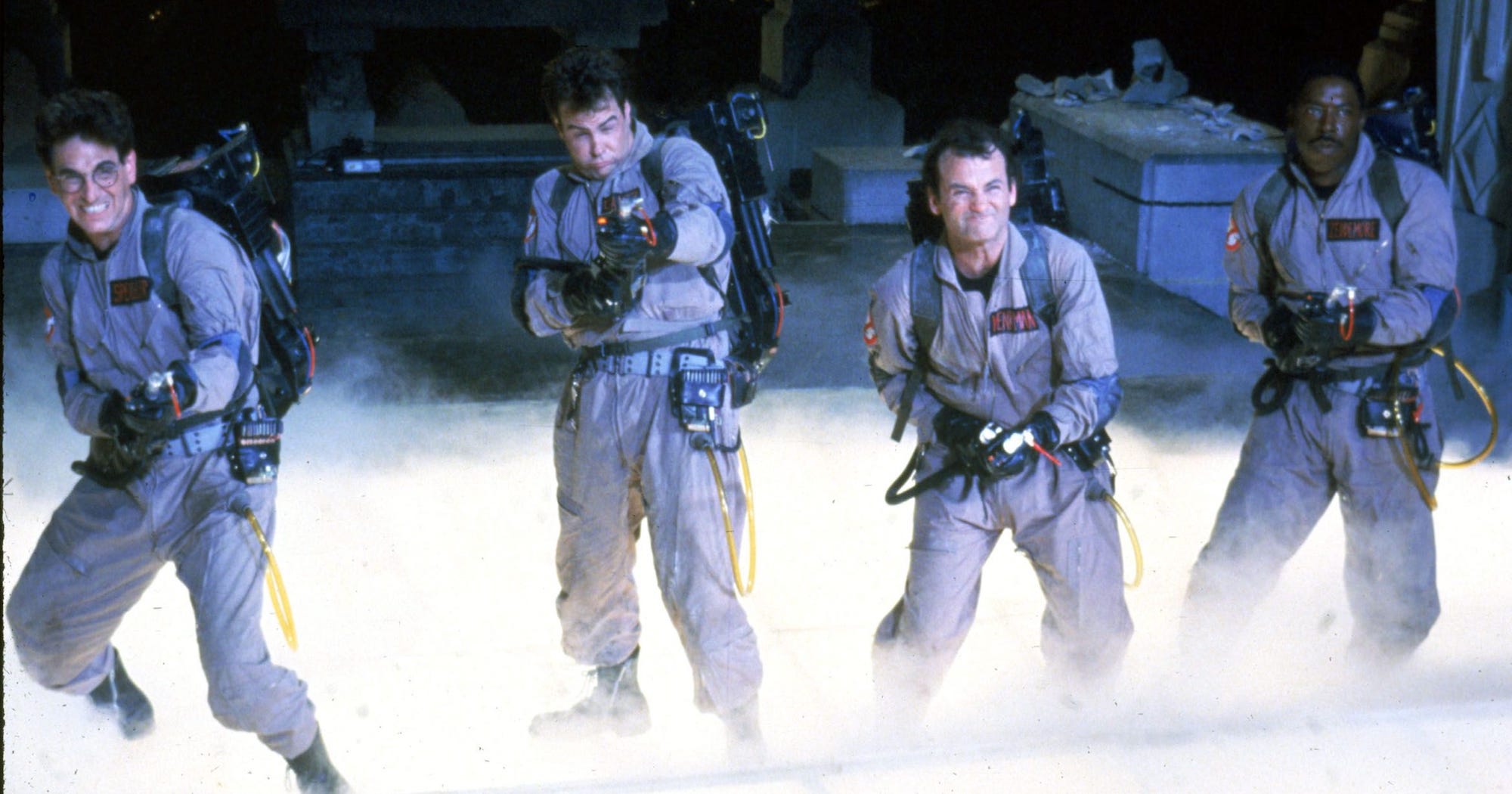
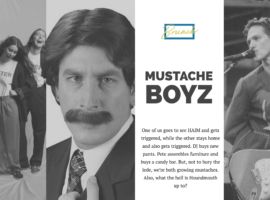
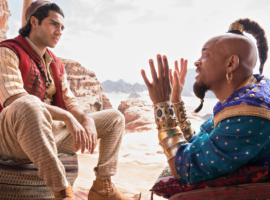
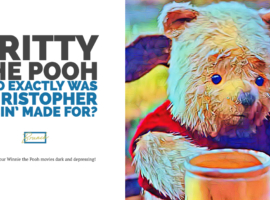
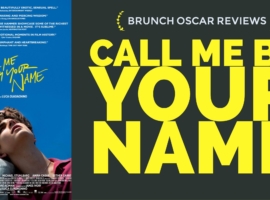

There are no comments